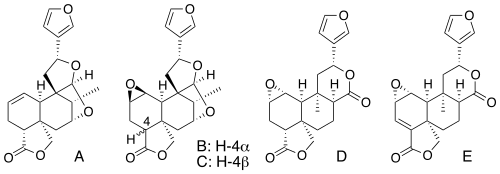Salvia polystachya
Salvia polystachya is a herbaceous perennial native to central Mexico and south into Guatemala and Panama, typically growing at elevations from 5,000-10,000 feet in mild climates where there is some summer rain. It is rarely seen in horticulture.[1]
| Salvia polystachya | |
|---|---|
| Scientific classification | |
| Kingdom: | Plantae |
| Clade: | Tracheophytes |
| Clade: | Angiosperms |
| Clade: | Eudicots |
| Clade: | Asterids |
| Order: | Lamiales |
| Family: | Lamiaceae |
| Genus: | Salvia |
| Species: | S. polystachya |
| Binomial name | |
| Salvia polystachya | |
Salvia polystachya grows up to 3–9 feet in one season, preferring the shelter of other plants because the stems become very brittle. It blooms in late summer or early fall, with .5 inch flowers that are violet-blue at the edge and fading to white at the center. Many short and slender spikes with verticils of tightly held flowers give the plant its specific epithet polystacha. The leaves are yellow-green, 1 inch long and wide, and grow in small clusters.[1]

From the aerial parts of Salvia polystachya five neo-clerodane diterpenoids, polystachynes A-E, have been isolated. The structures were established by spectroscopic methods. Other clerodanes such as salvifaricin, linearolactone and dehydrokerlin were also isolated.[2]
References
- Clebsch, Betsy; Barner, Carol D. (2003). The New Book of Salvias. Timber Press. p. 225. ISBN 978-0-88192-560-9.
- Maldonado and Ortega. Polystachynes A-E, five cis-neo-clerodane diterpenoids from Salvia polystachya. Phytochemistry (2000). 53, 103-109